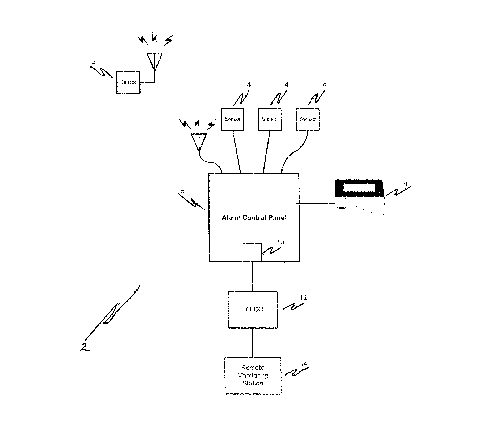Some of the information on this Web page has been provided by external sources. The Government of Canada is not responsible for the accuracy, reliability or currency of the information supplied by external sources. Users wishing to rely upon this information should consult directly with the source of the information. Content provided by external sources is not subject to official languages, privacy and accessibility requirements.
Any discrepancies in the text and image of the Claims and Abstract are due to differing posting times. Text of the Claims and Abstract are posted:
| (12) Patent: | (11) CA 2258817 |
|---|---|
| (54) English Title: | DUAL MODE PANEL |
| (54) French Title: | TABLEAU A DEUX MODES |
| Status: | Expired and beyond the Period of Reversal |
| (51) International Patent Classification (IPC): |
|
|---|---|
| (72) Inventors : |
|
| (73) Owners : |
|
| (71) Applicants : |
|
| (74) Agent: | DENNISON ASSOCIATES |
| (74) Associate agent: | |
| (45) Issued: | 2003-08-05 |
| (22) Filed Date: | 1999-01-05 |
| (41) Open to Public Inspection: | 2000-07-05 |
| Examination requested: | 1999-04-07 |
| Availability of licence: | N/A |
| Dedicated to the Public: | N/A |
| (25) Language of filing: | English |
| Patent Cooperation Treaty (PCT): | No |
|---|
| (30) Application Priority Data: | None |
|---|
A dual mode alarm control panel includes a sensing arrangement for determining conditions of the environment in which the panel is installed. The results of the environmental assessment are used to determine an operating mode of the panel. In a first mode the panel is fully functional, and in a second mode the functions of the panel are restricted. This process assists in operating alarm control panels in an environment corresponding to the assumed design environment. In this way, non-compliance or operating alarm panels in unsuitable environments is reduced or avoided.
Un panneau de commande d'alarme à double mode comprend un arrangement de télédétection permettant de déterminer les conditions de l'environnement dans lequel le panneau est installé. Les résultats de l'évaluation environnementale servent à déterminer un mode de fonctionnement du groupe. Dans un premier mode, le panneau est entièrement fonctionnel, et dans un second mode, les fonctions du panneau sont restreintes. Ce processus aide au fonctionnement des panneaux de commande d'alarme dans un environnement correspondant à l'environnement de conception supposé. De cette façon, la non-conformité ou l'utilisation des panneaux d'alarme dans les environnements inadaptés est réduite ou évitée.
Note: Claims are shown in the official language in which they were submitted.
Note: Descriptions are shown in the official language in which they were submitted.

2024-08-01:As part of the Next Generation Patents (NGP) transition, the Canadian Patents Database (CPD) now contains a more detailed Event History, which replicates the Event Log of our new back-office solution.
Please note that "Inactive:" events refers to events no longer in use in our new back-office solution.
For a clearer understanding of the status of the application/patent presented on this page, the site Disclaimer , as well as the definitions for Patent , Event History , Maintenance Fee and Payment History should be consulted.
| Description | Date |
|---|---|
| Time Limit for Reversal Expired | 2017-01-05 |
| Letter Sent | 2016-01-05 |
| Inactive: IPC from MCD | 2006-03-12 |
| Inactive: IPC from MCD | 2006-03-12 |
| Inactive: IPC from MCD | 2006-03-12 |
| Letter Sent | 2005-01-12 |
| Grant by Issuance | 2003-08-05 |
| Inactive: Cover page published | 2003-08-04 |
| Pre-grant | 2003-05-14 |
| Inactive: Final fee received | 2003-05-14 |
| Notice of Allowance is Issued | 2002-12-10 |
| Letter Sent | 2002-12-10 |
| Notice of Allowance is Issued | 2002-12-10 |
| Inactive: Approved for allowance (AFA) | 2002-11-18 |
| Amendment Received - Voluntary Amendment | 2002-10-07 |
| Inactive: S.30(2) Rules - Examiner requisition | 2002-06-07 |
| Application Published (Open to Public Inspection) | 2000-07-05 |
| Inactive: Cover page published | 2000-07-04 |
| Letter Sent | 1999-09-03 |
| Inactive: Single transfer | 1999-08-09 |
| Letter Sent | 1999-05-11 |
| All Requirements for Examination Determined Compliant | 1999-04-07 |
| Request for Examination Requirements Determined Compliant | 1999-04-07 |
| Request for Examination Received | 1999-04-07 |
| Inactive: IPC assigned | 1999-03-05 |
| Classification Modified | 1999-03-05 |
| Inactive: IPC assigned | 1999-03-05 |
| Inactive: First IPC assigned | 1999-03-05 |
| Inactive: Courtesy letter - Evidence | 1999-02-23 |
| Inactive: Filing certificate - No RFE (English) | 1999-02-18 |
| Application Received - Regular National | 1999-02-15 |
There is no abandonment history.
The last payment was received on 2003-01-06
Note : If the full payment has not been received on or before the date indicated, a further fee may be required which may be one of the following
Patent fees are adjusted on the 1st of January every year. The amounts above are the current amounts if received by December 31 of the current year.
Please refer to the CIPO
Patent Fees
web page to see all current fee amounts.
Note: Records showing the ownership history in alphabetical order.
| Current Owners on Record |
|---|
| TYCO SAFETY PRODUCTS CANADA LTD./PRODUITS DE SECURITE TYCO CANADA LTEE. |
| Past Owners on Record |
|---|
| JAMES PARKER |